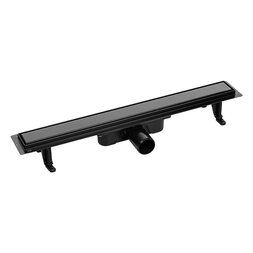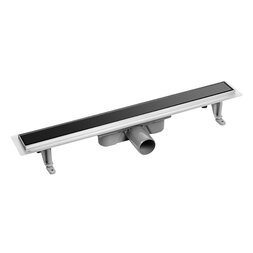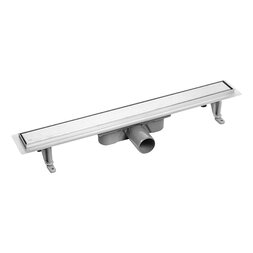Laveo - Linear drains
added:
Advices
The vast majority of bathrooms are too small to accommodate both a bathtub and a shower enclosure. What is more, some bathrooms must be given a lot of thought to be made both functional and elegant. What solutions combining these two features are available to owners of small spaces?
A very good choice for both small and minimalist bathrooms are showers without a shower tray. They have a very modern look (although associated with designer interiors, they blend in perfectly with any finishing style), are versatile (can be used in virtually any bathroom) and comfortable to use (easy entry and exit, easy to keep clean). A linear drain helps to create such a shower.
What is a linear drain?
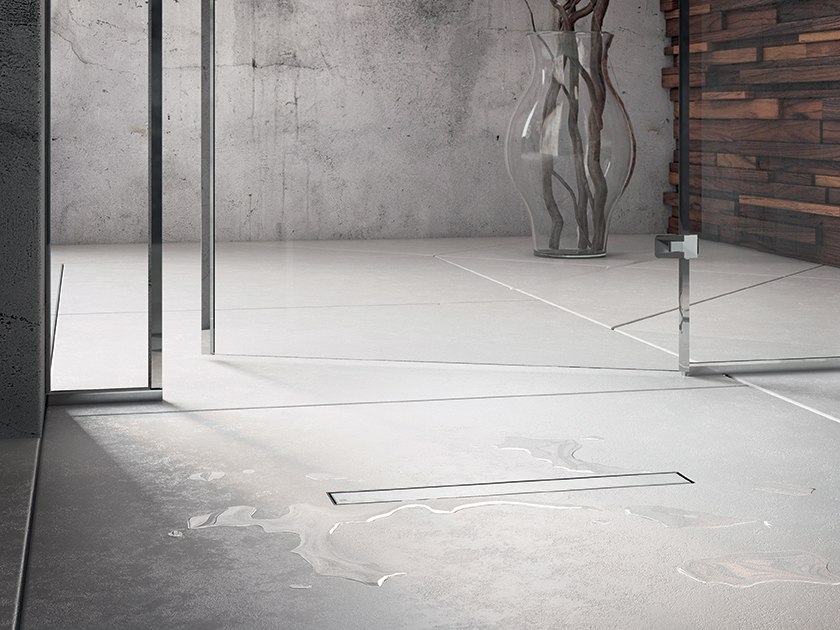
Put simply, a linear drain is a narrow channel, built into the floor in such a way that its grate remains visible, into which, due to the 2-3% slope of the floor tiles in the shower enclosure, the used water flows to be drained into the sewage system. Although there are many types of linear drains, most of them consist of the following elements:
- drain channel - a rectangular piece of steel meant to collect the water and drain it into a siphon,
- rim around the drain channel, needed in order to properly install and seal the drain (sometimes it forms one piece with the drain channel),
- sysiphon that prevents unpleasant odours from escaping from the sewer system and reduces the build-up of foam on the drain,
- drain grate, resistant to loads, temperatures and detergents.
This solution has revolutionised housing construction and the art of interior design permanently. It is widely and willingly used. Considering all its advantages, this is hardly surprising.
What are the pluses of using a linear drain in the bathroom?
 Offering the possibility of installing a shower enclosure without a shower tray or a walk-in shower in your bathroom, a linear drain enables you to design your shower zone in many different ways. Discreetly hidden in the floor, the drain is inconspicuous, adapted to the style of the bathroom, however, it complements the interior design adding to its chic and elegance. A well-chosen linear drain removes used water much more efficiently and hygienically than a point drain, and if it is made properly and of good quality materials, it should fulfil its role for many years. The absence of a shower tray, thresholds or barriers translates into comfortable showering for bathroom users, not just the elderly ones.
Offering the possibility of installing a shower enclosure without a shower tray or a walk-in shower in your bathroom, a linear drain enables you to design your shower zone in many different ways. Discreetly hidden in the floor, the drain is inconspicuous, adapted to the style of the bathroom, however, it complements the interior design adding to its chic and elegance. A well-chosen linear drain removes used water much more efficiently and hygienically than a point drain, and if it is made properly and of good quality materials, it should fulfil its role for many years. The absence of a shower tray, thresholds or barriers translates into comfortable showering for bathroom users, not just the elderly ones.
What should you pay attention to when choosing a shower drain?
-
1. Place of installation - manufacturers offer drain units that can be installed anywhere in the bathroom or against the wall.
-
Workmanship - all the plumbing components of the drain should be made of good quality materials. AISI 304 steel guarantees the best properties and long life, while for acidic environments it is recommended to use drains made of AISI 316 steel. When choosing a set making up a complete bathroom drain, it is worth paying attention to the finishing of the edges and joints, as well as the length of the warranty period offered by the manufacturer.
-
Functionality - effective drainage of used water from the shower enclosure is ensured by properly selected parameters of the drain, i.e.:- throughput (adapted to the shower capacity),- siphon height (low or ultra-low siphons for bathrooms in blocks of flats or with a shallow floor),- drain size (as a rule, the drain should be about 10 cm shorter than the width of the shower enclosure).
-
Appearance - it is another aspect that determines the choice of a particular drain. A tile-in shower drain, where bathroom tiles can be glued-in on top of it, visually forms a uniform surface with the floor. A linear drain with a grate, available in various finishes, enables you to make the shower zone more attractive. Floor drain manufacturers constantly provide new solutions, so it is worth checking the latest proposals, such as for example those using LED lighting to achieve interesting visual effects.

How much does a linear drain cost?
The prices of such units depend on their manufacturer as well as the type and quality of materials used. The cheapest units cost around PLN 450-600, more expensive models - PLN 600-1000, and products from the highest price range can cost up to PLN 1500-2000.
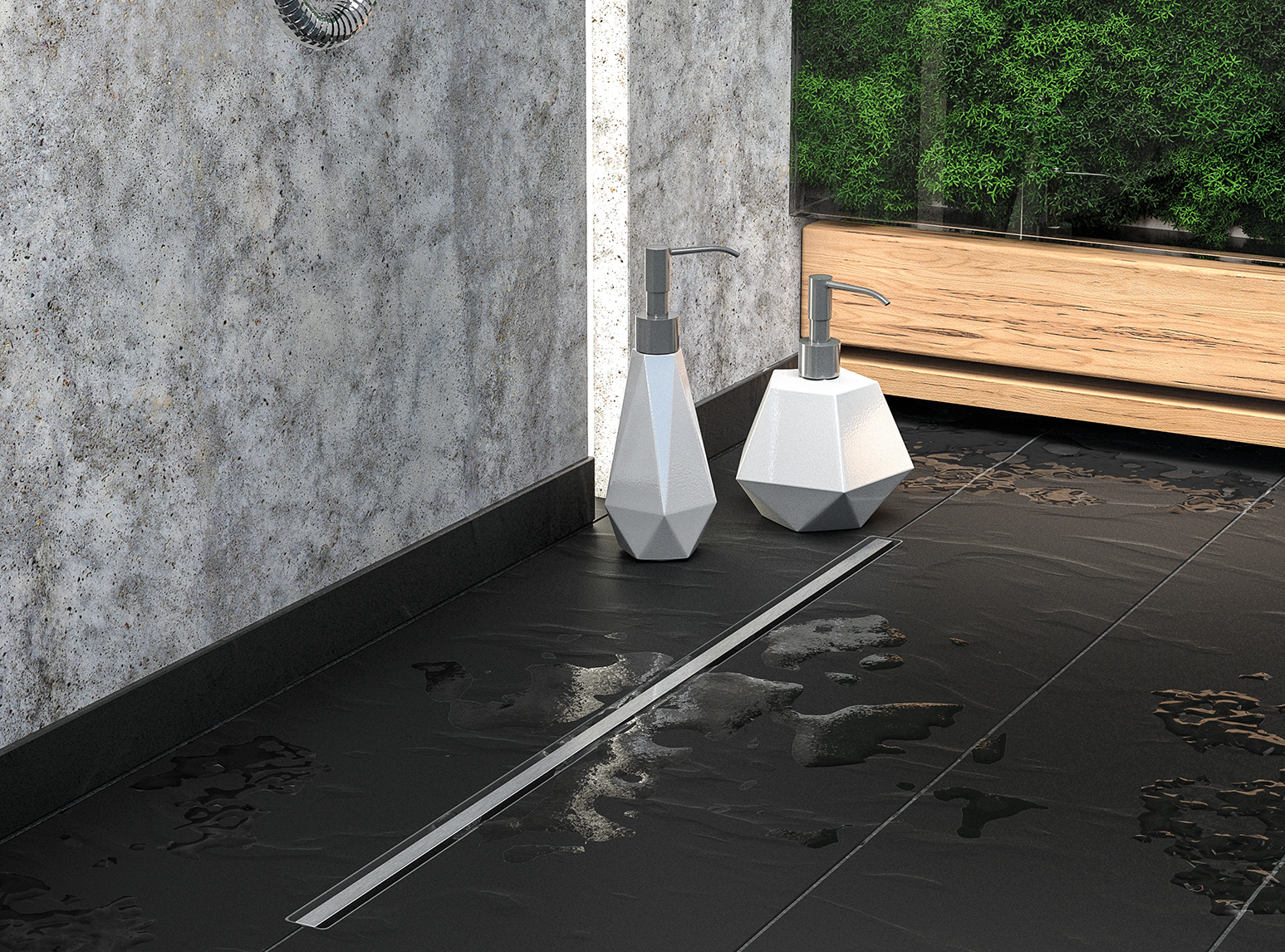
How to keep a linear drain clean?
Keeping a linear drain clean is not a problem as long as, firstly, the design of the drain unit allows the siphon to be cleaned from the top, secondly, the unit is correctly installed (well levelled and properly adjusted in height), and thirdly, dirt is removed on a regular basis (once every 1-2 weeks, more often if the shower is used by people with long hair or pets).
How to proceed with a clogged drain?
A drain can be unclogged with the use of home remedies, i.e. by pouring a hot solution of baking soda and vinegar. Chemical drain cleaners can be used according to their manufacturers’ instructions. The second way is to disassembly the unit and remove the debris manually. When the above methods fail, you need to use the services of a plumber.
A high-quality linear drain that is technically and stylistically matched to the shower enclosure will last a long time, provided that it is correctly installed (the drainage pipe slope should be at least 2-2.5%, the grate should be 1 mm below floor level, and the liquid foil should be 3-4 mm thick) and cleaned regularly. It is worth buying drains from reliable manufacturers and sellers who provide long warranty periods for their products, offer professional advice and assistance, and sometimes also render repair services. If you follow the above advice, the most common issues with drains, such as:
- problematic or impossible cleaning of the siphon from the top,
- unsightly discolouration and scratches,
- corrosion of the grate
